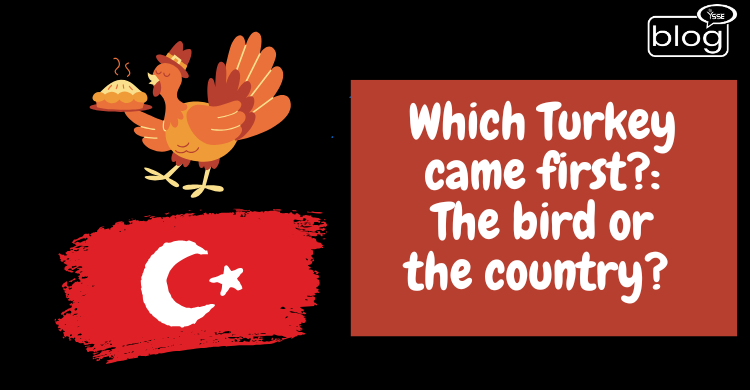Thanksgiving is not observed in Bangladesh. In contrast, eating turkey is a primary custom of the day at this large celebration in the West. Many people are familiar with the word “turkey” as a country name and as a bird name, despite the fact that the bird has no festive connections to our nation. However, have you ever considered the possibility that these two turkeys are actually related? If that’s the case, which comes first, the nation or the bird?
But the question that comes to mind first is why Turkey is the main attraction of traditional feasts. And is it named after Turkey? The story involves a mix of historical misunderstandings of global trade problems and linguistic quirks that have tied these two seemingly unrelated things together in a fascinating way.
Why is the country called Turkey?
The country’s name comes from its inhabitants, the Turks. Turkey’s history stretches back thousands of years, and the region has been home to multiple civilizations including the Greeks, Romans, and Byzantines. According to the Oxford English Dictionary, the earliest known use of the noun Turkey refers to the land occupied by the Turks in the Middle English period (1150 to 1500). The famous poet Chaucer mentions this region in his famous work “ Canterbury Tales’’ which is one of the earliest records.
Why is this bird called Turkey?
Please be ready for a shock, the central attraction of the traditional feast Thanksgiving
Isn’t called Turkey because its origin is Turkey, instead, it got its name from a different misinterpretation ‘There are two major mistakes involved in Turkey and the name of the bird ’.
Mistake 1
There is an African bird that today is known as the guinea fowl, when that bird reached Europe it was mistakenly linked to the country we now know as Turkey, and let’s see how that happened ? at the time, global trade routes were complex and often pass through Ottoman-controlled territories, during that time European merchants associate the bird’s journey with the Turks, and named that bird as “Turkey fowl’’, and this is a case of mistaken of identity: the bird had not any kind of real connection to the country other than its trade route.
The problem doesn’t stop here. In Turkish the bird is called Hindi, which translates to “Indian”. because when Turkey reached to Ottoman Empire, locals mistakenly thought that the bird came from India . Similarly in French, the bird is called Dinde, short for Poulet d’inde (chicken of India)In Portuguese it’s called Peru so every culture has its own version of the name mix-up, and the main reason behind it was the global trade problem of that time.
Mistake 2
The second mistake is mistaken identity. When the English settlers encountered the American wild turkey, it resembled the guinea fowl they were used to eating, so they assumed it was the same. In reality, the two birds are different species.
This is a very human problem like, you have seen something you’ve never seen before, but it looks like something you have seen before, so you use the name for it.
So the English settler started calling this bird turkey hen or turkey cock –or just turkey as well.
So which came first: Turkey or Turkey?
In the end, it doesn’t matter that the name of the Thanksgiving Day star is rooted in linguistic confusion or trading route problems. We are not going to change the name of what we call the American bird just because we know it’s the wrong name. Beyond being a fun trivia fact, the story of the two Turkeys offers a glimpse into how interconnected the world has always been. Even centuries ago, trade and travel brought people, goods, and ideas together in surprising ways. It’s also a reminder of how names can carry stories of human curiosity, exploration, and a little bit of confusion.
The next time you enjoy a turkey dinner, think about its unusual journey—from the forests of the Americas to the tables of Europe, through Ottoman trade routes, and finally to your plate
To read more blogs like this click here.
Writer
Shah Mohammad Fazle Elahi
Intern,
Content Writing Department
YSSE.

